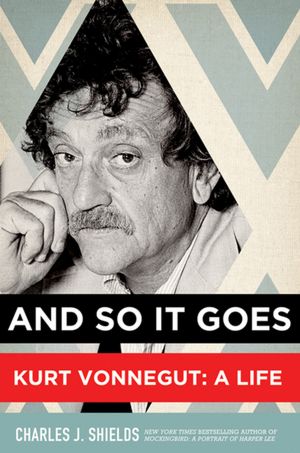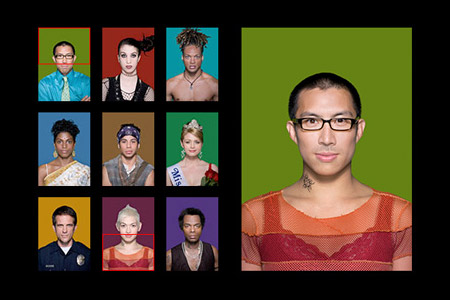2011 was a good year for superhero beefcake. Not in
comics, of course, but at the movies. And not in terms of quantity, but
in terms of quality. What I'm saying is that Chris Hemsworth took his
shirt off in Thor, and it was great.
All right, Chris Evans took his shirt off as well for his Charles-Atlas-ification in
Captain America,
and I understand Ryan Reynolds was briefly featured in his scanties
before having his body replaced with a cantaloupe-skinned wire-frame in
Green Lantern.
That was it, though. The bar for superhero beefcake is set pretty low.
And the bar is set low because the source material -- actual superhero
comics -- has never been fertile ground for the shameless sexual
objectification of men.
I know that sounds extraordinary to fans who insist that the men in
superhero comics are objectified just as much as the women, but I speak
as someone who spent his teen years hungry for comics that featured
half-dressed supermen.

As
a hormonal gay adolescent in the pre-internet age I cherished those
very occasional -- and usually incidental -- moments of shirtlessness.
Marc Silvestri's Havok in a torn-up costume as the Goblin Prince? John
Romita Jr.'s Matt Murdock in tighty whities? Alan Davis's Captain
Britain in drawstring pajama pants? Joe Mad's Banshee flashing his abs
as he pulls on a sweatshirt? Any comic set in the Savage Land? These
were my sacred texts. (And yes, I was a Marvel kid.)
Straight boys never have to hunt for that sort of fan service. The whole
industry caters to their libidos. Gay boys and straight girls do not
enjoy the same level of pandering. Sure, the men in these comics are
usually buff and handsome, and they're all dressed in skin-tight clothes
and they all have six-pack abs. If you enjoy looking at athletic,
attractive men, you will find athletic, attractive men in these books,
especially when drawn by artists like Chris Sprouse, Dale Eaglesham,
Nicola Scott and Olivier Coipel.
But it's not equivalent. Superhero men are idealized, yes, but they're
rarely sexualized. While women are presented as broken-backed boob
hostesses whose
every move is a bend-and-snap designed to flatter and entice
the presumed-male, presumed-straight reader, the men are sexless
paragons of strength, with propaganda poster good looks that serve as
visual shorthand for their masculine, heroic bona fides.
As a gay man, I want more from my objectification. I can't speak for
straight women, but I suspect they want better as well. [Editor's note:
We do.] There's a popular perception that women aren't as shallow about
appearance as men, and maybe that's true, but they're more than capable
of being just shallow enough. Many women of my acquaintance prefer the
pale, skinny men of BBC costume drama rather than the Hollywood jocks I
like, but whether you want Chris Hemsworth or Tom Hiddleston, Paul
Walker or Paul Bettany, Colin Farrell or Colin Firth, we all like to
look.
Our culture is slowly shifting towards equal opportunity ogling. TV is
leading the way both with shows that load their casts with obvious
hunks, like
Glee,
Hawaii 5-0 and
The Vampire Diaries,
and with shows that shamelessly pander to a man-fancying audience with
previously unimagined acres of muscled male flesh, like
True Blood,
Spartacus, and MTV's
Teen Wolf.
Movies are catching up as well. The scene in 2006's
Casino Royale
when Daniel Craig stepped out of the water in tiny square-cut shorts
was a watershed moment that opened the door to Taylor Lautner's abs in
Twilight: New Moon, Ryan Gosling's abs in
Crazy Stupid Love,
and Ryan Reynolds's abs in... every movie he makes. Marvel Studios has
been smartly on-message in casting leads in its man-friendly movies that
might appeal to the oft-neglected other major demographic.
Yet while Marvel Studios is moving in the right direction, actual
superhero comics are about as backward as it gets. The see-saw is so
tilted towards the exploitation of women that when Wonder Woman put on a
pair of trousers there was an outcry, whereas no-one blinked when Namor
swapped his swimming trunks for long trousers and a shirt, and Namor is
not a character who is coy about his sexuality.
Male superheroes are not written sexy, they're rarely drawn sexy, and
they do not dress sexy. While maybe half of all female characters belong
on a skin-baring scale from Star Sapphire to Wonder Woman, most male
characters fit on a scale from Superman to Spider-Man. Batman has about
as much skin showing on his chin as Power Girl shows on her boobs.
There are exceptions. Hercules, Hawkman and Grunge stand apart as heroes
happy to flash the flesh, and they each have their fans. The other most
scantily clad guys are monsters like the Hulk and the Thing, and even
the Thing now wears a leotard, while no-one thinks the Hulk wears
cut-offs to bring the girls to the yard. (If Hulk were drawn to be
attractive, the way She-Hulk is, he'd look less like a sack of angry
walnuts and more like a green Randy Orton.)
Most male heroes actually wear considerably more than wrestlers. They
wear more clothes than gymnasts, rugby players or soccer players.
Because so many heroes wear gloves and masks, they're even overdressed
compared to most soldiers. A thousand justifications are given for
female characters to wear as little as they do, from "she's a ninja who
needs unrestricted movement" to "she's an alien who isn't hung up on our
repressed human notions about sexuality," yet male characters never
benefit from the same excuses.
For example, why does Aquaman wear a shirt? Why does Thor wear armor?
Why does Gambit wear high collars and metal boots when he would look
better and be more in character in an open-neck shirt and long leather
riding boots? Why did Superboy trade in the tight black t-shirt for Tron
cosplay? And Northstar must have some idea what looks good on a guy, so
why does he dress like a Christmas elf in a nunnery? I can't think of
any gay man with arms like that who keeps them covered up.
Then there's the definitive example; Grant Morrison's Marvel Boy (let's
please not call him Protector). He was meant to be a young, dumb, sexy
character, especially as drawn with a J.G. Jones pout. He was a boyband
babe who wore tight shorts and short sleeves, but now that vision of the
character has been traded in for a guy in the standard spandex burqa of
the superman.
Despite the convention for square-jawed heroes with broad shoulders and
perfect abs, superhero comics are not courting the half of the world
that likes a pretty guy. The industry has the talent -- especially with
an increasing number of straight women and gay men at the drawing boards
-- but it doesn't have the will to pander to that audience. Comics lag
behind other media because the dominant genre remains devoted to one
demographic, while the rest of our culture increasingly wants to appeal
to everyone.
In 2012 the best superhero beefcake will probably still come from the movies.


 A chronicle of the lives of bouncers – the burly boys who guard both sides of the door in nightclubs across America.
A chronicle of the lives of bouncers – the burly boys who guard both sides of the door in nightclubs across America.











 As
a hormonal gay adolescent in the pre-internet age I cherished those
very occasional -- and usually incidental -- moments of shirtlessness.
Marc Silvestri's Havok in a torn-up costume as the Goblin Prince? John
Romita Jr.'s Matt Murdock in tighty whities? Alan Davis's Captain
Britain in drawstring pajama pants? Joe Mad's Banshee flashing his abs
as he pulls on a sweatshirt? Any comic set in the Savage Land? These
were my sacred texts. (And yes, I was a Marvel kid.)
As
a hormonal gay adolescent in the pre-internet age I cherished those
very occasional -- and usually incidental -- moments of shirtlessness.
Marc Silvestri's Havok in a torn-up costume as the Goblin Prince? John
Romita Jr.'s Matt Murdock in tighty whities? Alan Davis's Captain
Britain in drawstring pajama pants? Joe Mad's Banshee flashing his abs
as he pulls on a sweatshirt? Any comic set in the Savage Land? These
were my sacred texts. (And yes, I was a Marvel kid.)








